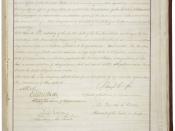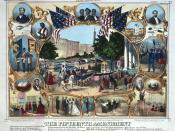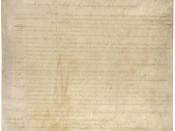Gun Control
* The Amendment
The Second Amendment to the Constitution in the Bill of Rights states: "A well regulated militia, being necessary to the security of a free state, the right of the people to keep and bear arms, shall not be infringed."
The first part, pertaining to militias, is widely accepted by Americans of all political persuasion. It preserves the right of each individual state to form its own "militia," the National Guard. Few disagree on the necessity of state militias; the controversy surrounding the Second Amendment stems from the second clause, maintaining the right of "the people" to "keep and bear arms."
The first part of the clause mentions "the people." This is a vague term. Exactly who are "the people?" Some believe "the people" are the individual states, and that the second clause is dependent upon and modifies the first. Thus, the people, or the states, may bear arms, or maintain a militia, which is the National Guard.
The second part of the clause says the undefined people have the right to "keep and bear arms." Does this mean that each individual citizen has the right to own a firearm, or does it mean they may group into militias? Or does this simply mean the states may maintain militias? Here, strict and loose interpretations apply.
There are multiple ways to look at the Second Amendment when determining strict and loose interpretations, and deciding what the strict stance is and what the loose is can become difficult. The difficulty lies in the ambiguity of the wording. If the wording itself cannot be agreed upon, applying the law becomes that much more difficult. The interpretations that make the most sense are thus:
1. Strictly interpreted, the people are just that--the people, meaning, every individual. Every individual has the...



good
the paper was average
0 out of 0 people found this comment useful.